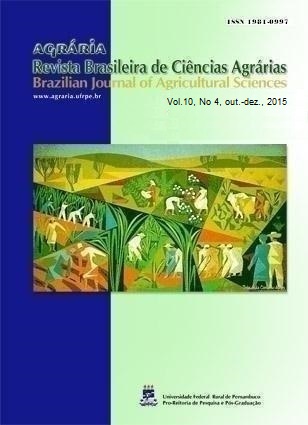Spatial distribution of rainfall erosivity in Brazil from synthetic precipitation series
DOI:
https://doi.org/10.5039/agraria.v10i4a4998Keywords:
soil and water conservation, universal soil loss equation, climate generatorAbstract
The aim of this study was to spatialize the rainfall erosivity in Brazil from synthetic precipitation series. The study was conducted in Brazil, using data from 142 stations pluviographic. The erosivity were calculated from actual daily rain gauge records and from pluviographic daily synthetic series, generated from the ClimaBR software. A computer routine was specifically developed to identify rain erosive considered. For the spatial distribution of erosivity the methods of inverse distance interpolation power and ordinary, simple and universal kriging were evaluated. Comparison of interpolation methods was done by means of statistical measures, average percentage error, mean absolute error, root mean square error and Willmott index. The results indicate that the inverse power method of distance presented better performance to interpolate the erosivity relative to the kriging method.
Downloads
Downloads
Published
How to Cite
Issue
Section
License

This work is licensed under a Creative Commons Attribution-NonCommercial 3.0 Unported License.


